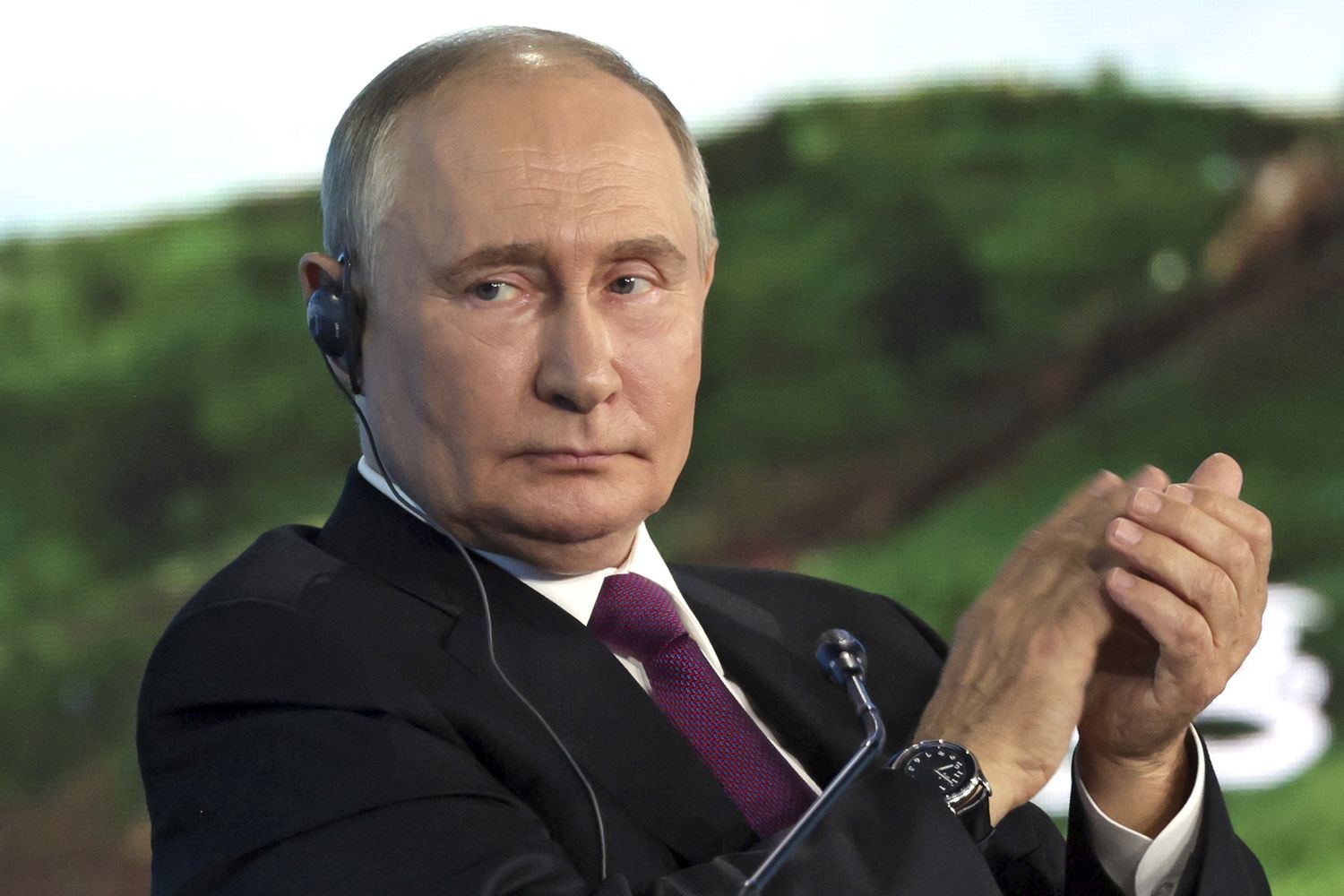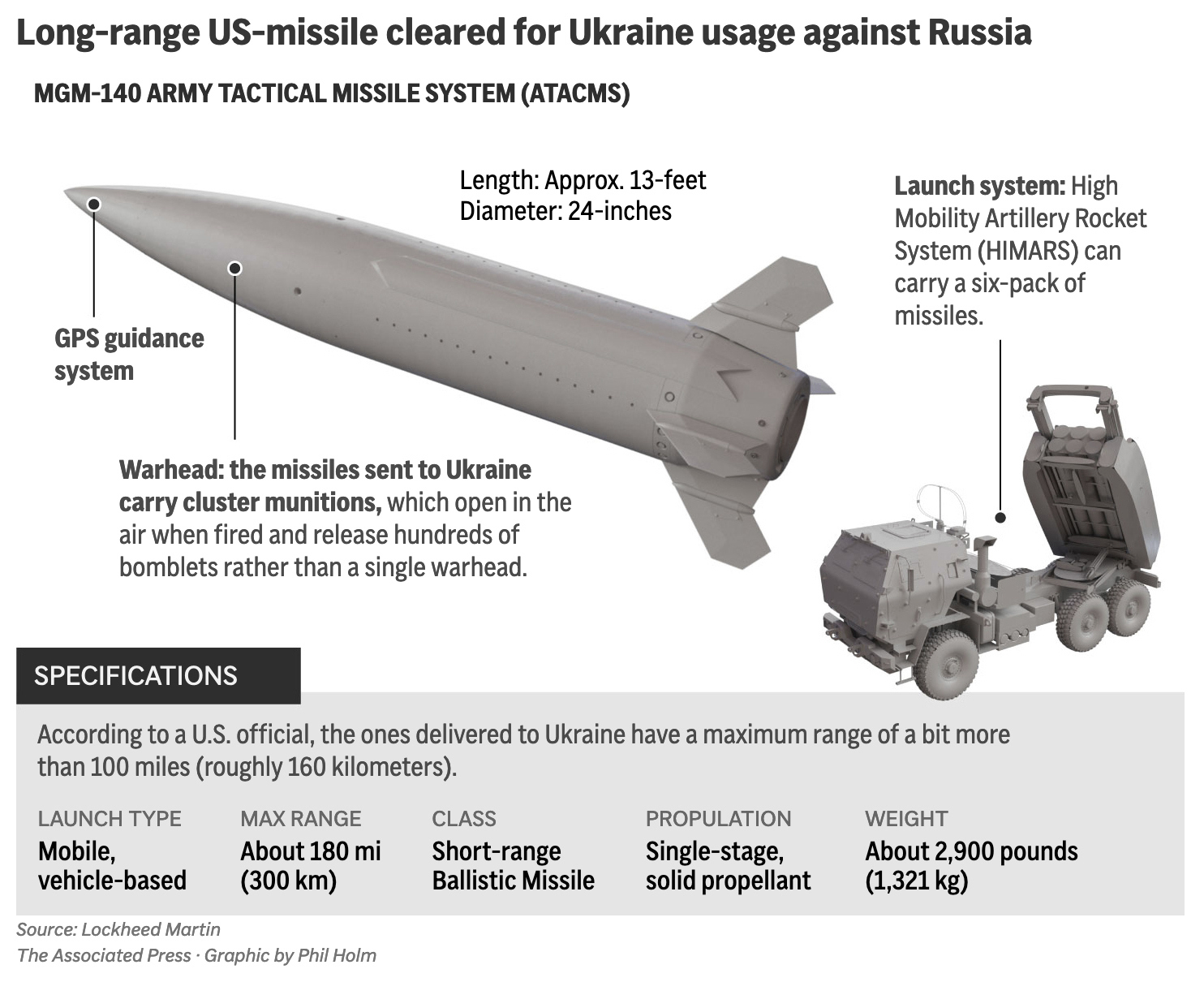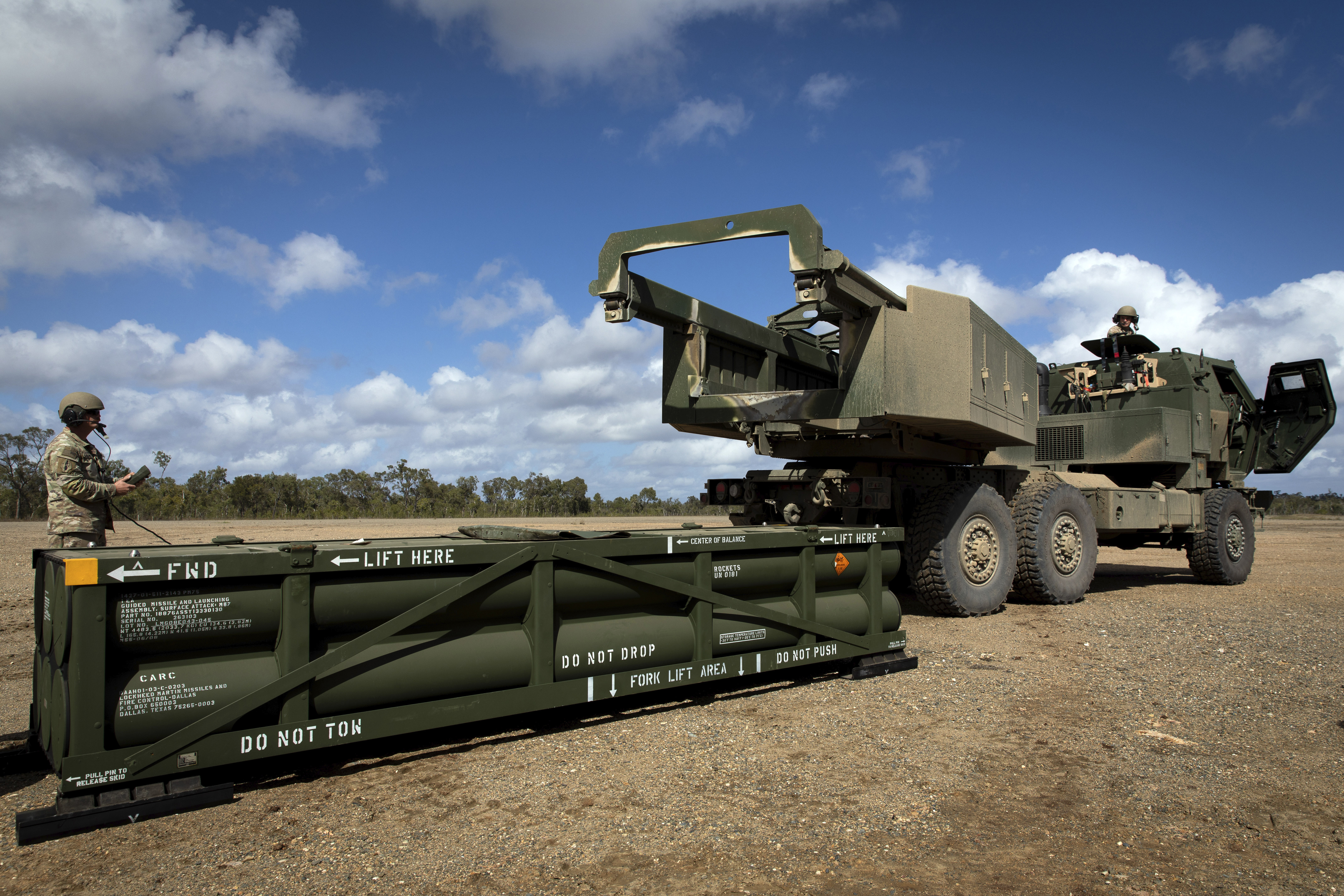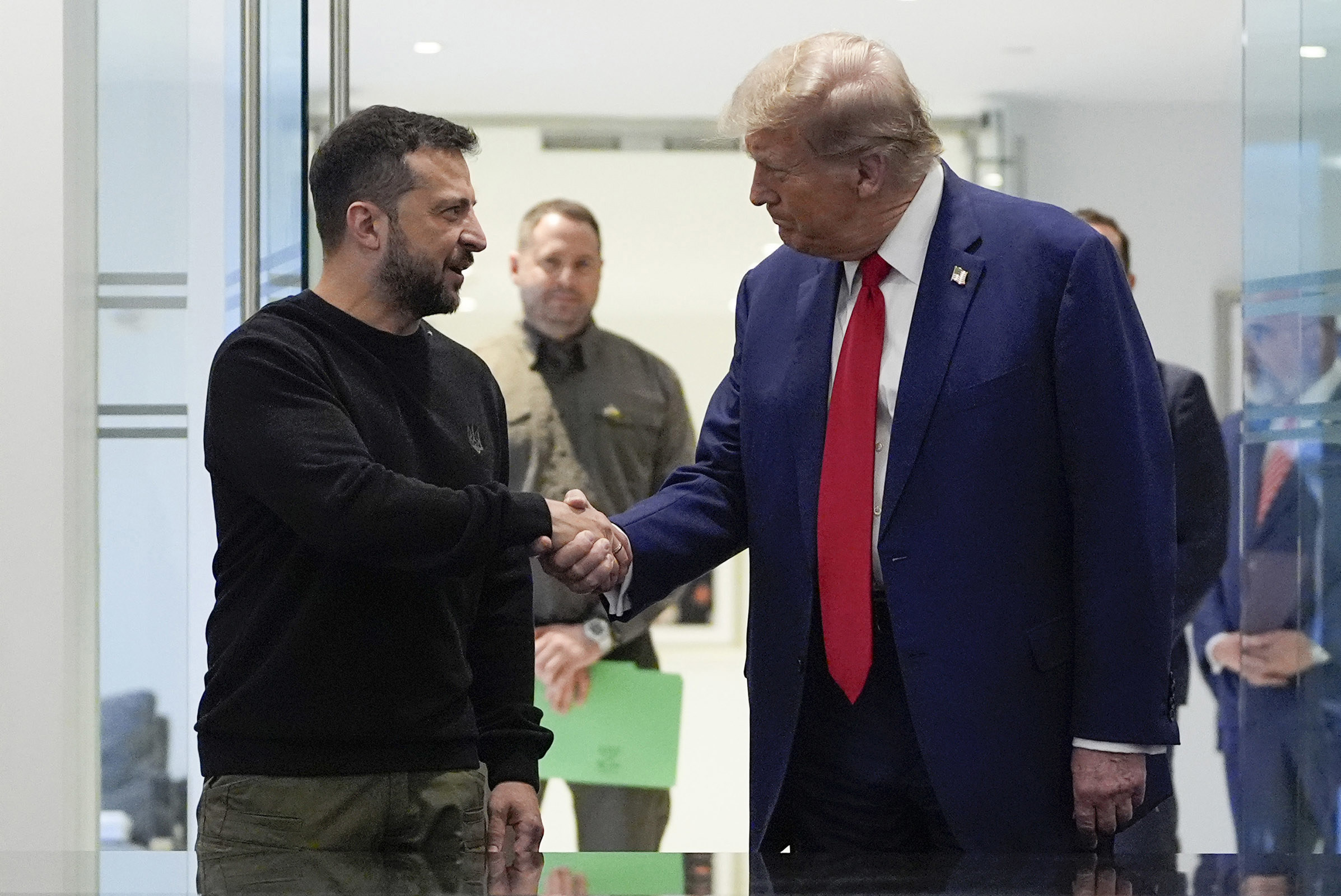The Kremlin has warned that US President Joe Biden’s decision to let Ukraine strike targets inside Russia with American-supplied longer-range missiles adds “fuel to the fire” of the war and would escalate international tensions even higher.
Biden’s shift in policy added an uncertain, new factor to the conflict on Tuesday’s 1000-day milestone since Russia began its full-scale invasion in 2022.
It also came as a Russian ballistic missile with cluster munitions struck a residential area of Sumy in northern Ukraine, killing 11 people and injuring 84 others. Another missile barrage sparked apartment fires in the southern port of Odesa, killing at least 10 people and injuring 43, Ukraine’s Interior Ministry said.
READ MORE: Former top broadcaster Alan Jones hit with two more charges after ninth alleged victim comes forward
Washington is easing limits on what Ukraine can strike with its American-made Army Tactical Missile System, or ATACMs, US officials told The Associated Press on Sunday, after months of ruling out such a move over fears of escalating the conflict and bringing about a direct confrontation between Russia and NATO.
The Kremlin on Monday (Tuesday AEDT) was swift in its condemnation.
“It is obvious that the outgoing administration in Washington intends to take steps, and they have been talking about this, to continue adding fuel to the fire and provoking further escalation of tensions around this conflict,” spokesman Dmitry Peskov said.
Peskov referred journalists to a statement from President Vladimir Putin in September in which he said allowing Ukraine to target Russia would significantly raise the stakes.
It would change “the very nature of the conflict dramatically,” Putin said at the time. “This will mean that NATO countries — the United States and European countries — are at war with Russia.”
The decision to let Ukraine strike targets inside Russia comes in the waning days of Biden’s presidency, before President-elect Donald Trump assumes office. Trump has said he would bring about a swift end to the war, which many fear could force unpalatable concessions from Kyiv.
READ MORE: Massive Russian strikes across Ukraine trigger blackouts and kill at least five people
What are ATACMs?
The ballistic missiles, developed by US aerospace and defence company Lockheed Martin, have nearly double the striking distance — up to 300km — of most of the weapons in Ukraine’s possession.
They carry a larger payload and have more precise targeting for pinpoint attacks on air fields, ammunition stores and strategic infrastructure.
The United States has supplied Ukraine with dozens of ATACMS (pronounced attack-ems) and they have been used to destroy military targets in Russian-occupied parts of Ukraine such as Crimea — but not on Russian soil.
What is Biden allowing Ukraine to do?
Biden authorised Ukraine to use the ATACMS to strike deeper inside Russia, according to a US official and three other people familiar with the matter.
The longer-range missiles are likely to be used in response to North Korea’s decision to send troops to support Kremlin forces, according to one of the people familiar with the development. Pyongyang’s troops are apparently being deployed to help the Russian army drive Ukrainian forces out of Russia’s Kursk border region, where they launched an incursion in August.
The officials spoke on condition of anonymity because they were not authorised to discuss the US decision publicly.
It was the second time that Washington has expanded Ukraine’s authority to use its US-provided weapons systems inside Russian territory.
In May, after Russia’s offensive into the Kharkiv region threatened to stretch Ukrainian forces thin, Biden permitted the use of HIMARS systems — with a range of 80km — to quell that advance. That decision helped Ukrainian soldiers stabilise the fight for a time by forcing Russian forces to pull back military assets.
READ MORE: Trial of police officer who Tasered 95-year-old woman enters final stages
Why does Ukraine need longer-range weapons?
Ukraine has been asking its Western allies for longer-range weapons in order to alter the balance of power in a war where Russia is better resourced, and strike with precision air bases, supply depots and communication centers hundreds of kilometres over the border.
It hopes the weapons would help blunt Russia’s air power and weaken the supply lines it needs to launch daily strikes against Ukraine and to sustain its military ground offensive into Ukraine.
If used in Kursk, the weapons would likely require Russian forces preparing for counterattacks to push back valuable equipment and manpower and complicate battle plans.
In lieu of Western weapons, Ukraine has been regularly striking Russia with domestically produced weapons, with some capable of travelling up to 1000km , but still lacks sufficient quantities to do serious long-term harm.
Will the decision change the course of the war?
Ukrainian leaders are being cautious about the announcement — and senior US defence and military leaders have persistently argued that it won’t be a gamechanger. They also have noted that Russia has moved many key assets out of range.
“I don’t believe one capability is going to be decisive and I stand by that comment,” US Defence Secretary Lloyd Austin has said, noting that the Ukrainians have other means to strike long-range targets.
Analysts have also suggested the effect could be limited.
“Today, many in the media are talking about the fact that we have received permission to take appropriate actions. But blows are not inflicted with words. Such things are not announced. The rockets will speak for themselves,” said Ukrainian President Volodymyr Zelenskyy of the announcement.
The effect of the decision depends on the rules set for the weapons’ use.
If strikes are allowed across all of Russia, they could significantly complicate Moscow’s ability to respond to battlefield demands.
If strikes are limited to the Kursk region, Russia could relocate its command centres and air units to nearby regions, blunting the effect of those logistical challenges. That would also mean many of the valuable targets Ukrainian officials have expressed desire to hit may still be beyond reach.
Either way, Pentagon spokesman Lieutentant-Colonel Charlie Dietz has noted the ATACMS wouldn’t be the answer to the main threat Ukraine faces from Russian-fired glide bombs, which are being fired from more than 300km away, beyond the ATACMS’ reach.
What are the key remaining questions?
In addition to it being unclear what, if any, restrictions the US will impose on the weapons’ use, it’s also not known how many the US will give to Ukraine.
While the US has provided ATACMS to Ukraine in various military aid packages, the Defence Department will not disclose how many have been sent or exactly how many of those missiles the Pentagon has. Estimates suggest the US has a number that is in the low thousands.
The recent American election raises questions over how long this policy will be in place. Trump has repeatedly criticised the Biden administration’s spending to support Ukraine — and could reverse moves like this one.
On the other hand, it’s also not clear whether other allies might step up: The decision may encourage Britain and France to allow Ukraine to use Storm Shadow missiles, also known as SCALP missiles, with a range of 250km.
DOWNLOAD THE 9NEWS APP: Stay across all the latest in breaking news, sport, politics and the weather via our news app and get notifications sent straight to your smartphone. Available on the Apple App Store and Google Play.





